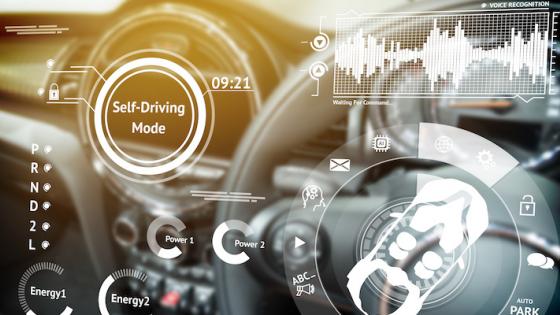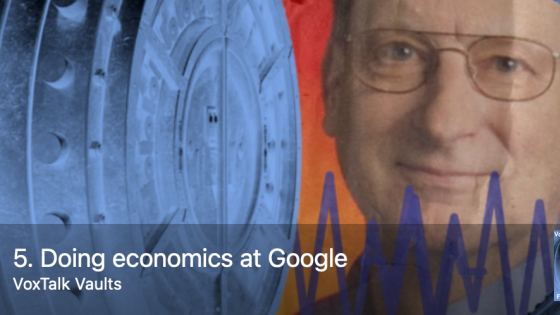Truth is stranger than fiction – even science fiction. Until a couple of years ago, self-driving cars seemed to be possible only in science fiction movies. But the truth is, they are not really very high-tech. They use no breakthrough technology. They are a jumble of existing technologies like GPS, wi-fi, advanced sensors, anti-lock brakes, automatic transmission, traction and stability control, adaptive cruise control, lane control, and mapping software – all integrated into a useful product with hallucinatory amounts of processing power. Despite being a mash-up of off-the-shelf tech, self-driving cars will create a $7 trillion market.
This is not an isolated example of standard digital components being turned into billion-dollar products. It is typical of many of today’s most innovative products, apps, and systems, including Uber and Airbnb.
The essence of this sort of phenomenon was first pointed out, in 2003, by Google’s chief economist, and world-renown academic, Hal Varian. In an essay called “Innovation, Components and Complements”, Varian wrote: “Every now and then a technology, or set of technologies, comes along that offers a rich set of components that can be combined and recombined to create new products. The arrival of these components then sets off a technology boom as innovators work through the possibilities.”
In 2001, Varian had called this process ‘combinatorial innovation’. In my 2019 book, The Globotics Upheaval, I call it Varian’s Law. The earliest reference to his point, or least the earliest one that I could find that used the phrase ‘combinatoric innovation’ is a speech dated 8 May 2001, but is developed more fully in his “Innovation, Components and Complements”.
Varian’s Law
Varian was an academic for many years. He is thus quick to note that the ‘innovation as recombination’ idea is not new, and not his. He cites The Theory of Economic Development, written by Joseph Schumpeter in 1934, as the source, specifically the section titled “Development as production of new combinations”.
Previous waves of innovation were similarly triggered by the emergence of new technological components. Varian points to the First Industrial Revolution, where the components were steam engines, telegraphs, and railroads in the 18th century, and the Second Industrial Revolution, where the components were gasoline engines, electric motors, reliable electricity, and advanced chemistry in the 19th century.
There is one critical difference between today’s set of new technologies and those older innovations. Today’s components are free and digitised, so they can be costlessly, perfectly, and instantly shared around the world at the speed of light – as Erik Brynjolfsson points out in his book, The Second Machine Age. Open-source software is critical to this. As Varian wrote in 2003:
“Open-source software is like the primordial soup for combinatorial innovation. All the components are floating around in the broth, bumping up against each other and creating new molecular forms, which themselves become components for future development.”
The innovation boom surrounding the emergence of the internet around 1995, for example, seemed very different from the Second Industrial Revolution that was Schumpeter 's reference point. Bob Gordon, an economist with strong views on innovation, examined this in a Ted talk called “The Death of Innovation, the End of Growth”.
In the recent wave, progress is measured in months or years, not decades. Varian’s key insight was that the components of the internet revolution are not physical devices. They are concepts, standards, protocols, programming languages, and software. Unlike gears, cams, pulleys, and vacuum tubes, this wave of invention never suffers from manufacturing delay, shipping costs, or inventory problems. Software allows innovators everywhere to try out new combinations immediately.
The result is innumerable web pages, discussion forums, clickable images, web-based mail programmes, MP3 files, and online auctions – all developed from a few basic tools and protocols. Much of this uses open-source software, so programmers could open the box and see how the new applications were assembled.
This lowers entry costs. With cloud storage and computing, small startups, or even individuals, have access to amazing resources that can be hired. In the summer of 2017, for instance, Google made its machine learning platform TensorFlow freely available online. Many massive training datasets are already free on the web, as Bernard Marr explains. Kaggle is another rich source of shared data science projects.
Hal Varian
A tall, laid-back man, Varian is the lead economist at Google. When I asked him in the summer of 2017 what he did at Google, he replied: “I work on the boring side of Google – the one that makes all the money.” (This refers to the automated auctions that Google uses to sell advertising).
Varian is not as flamboyant as many of today's tech heroes. He was formerly a professor of economic theory at MIT, Berkeley, and Oxford. He wrote microeconomic textbooks that shaped the thinking of the current generation of economists (including me).
In the late 1990s, he started investigating the theory of how capitalism works in the internet age. With fellow theorist Carl Shapiro he published Information Rules: A Strategic Guide to the Network Economy. It showed how standard economic concepts could help engineers, investors, and managers understand the wild world of technology. The book was published at the height of the tech bubble. It boiled down the economics of information and networks into business strategies.
Why this matters for service-sector automation
The basic components that will be needed to automate many service-sector and professional jobs already exist. Computers can see, read, listen and speak. They can use this to take instructions and report the results of their inhuman ability to quickly extract information from ridiculously large amounts of information. These components will allow computers and robots to take over many of the chores that make up most service-sector jobs. The components just need to be put together in useful ways.
Varian’s Law predicts that an army of startup companies will be working to replace human workers with AI-driven computer systems and physical robots that are guided by AI, or some combination of RI and AI. And that is what we have.
For example, Fannie Mae’s human analysts used to produce reports on the credit standing of specific companies. On their own, these service-sector workers only managed to cover the hundred most significant companies. The process has recently been automated by an AI-driven software platform that reads SEC filings and online data sources. Now Fannie Mae produces reports on 6,000 companies that it might lend to.
Varian’s Law suggest that these examples will arrive with an accelerating frequency, since each new application creates ‘components’ that can be used in new applications.
Why it matters for future globalisation
The globalisation pillar of the globotics upheaval will be the opening of the US and European service sector and professional jobs to direct wage competition from abroad. This ‘international telecommuting’ has so far been hindered by the same sorts of things that kept self-driving cars in the laboratories for so many years. People knew how to do it in principle – the components all existed – but they just hadn’t been put together in the right way.
The two biggest barriers to telemigration are language differences and communication problems. Varian’s Law of recombinational innovation – catalysed by Moore's, Gilder's and Metcalfe's Laws – is eroding both barriers.
Instant machine translation has been possible for many years, but it was never really good. This is changing at an explosive pace as startups and corporate giants recombine digital parts into truly useful digital products. Many users of machine translation date their ‘holy cow' moments to 2017.
Varian’s Law is also making progress on longstanding communication problems. Many startups and giants like IBM are using elements of gaming systems like virtual reality and augmented to make remote people seem less remote.
Varian’s Law helps create more efficient software platforms for remote collaboration – things like Slack and Trello. These are just new combinations of old digital components, but they are attracting huge attention (and large numbers of users) because they creating a lot of value. Slack, which is a cloud-based collection of collaboration tools and services, is now valued at more than $7 billion; only 700 people work there. This sort of success has attracted entrepreneurs from across the globe.
Read the previous blog in this series here.




